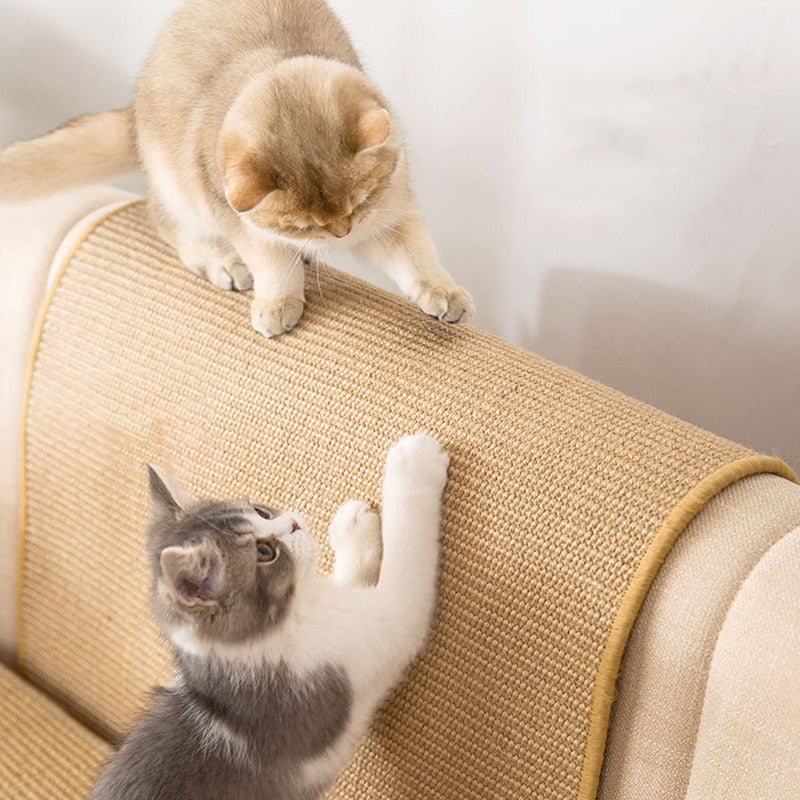Cats are fascinating creatures, and they bring joy and excitement to our lives. However, as much as we love them, we also often find ourselves frustrated by their constant scratching behavior. Whether it's the rugs, furniture or curtains, it's hard for cat owners to ignore the damage caused by their pets' claws.

So why do cats scratch in the first place?
Scraping their claws against surfaces is actually an essential activity for cats. It helps them maintain healthy claws and is an instinctual act that is deeply ingrained in their behavior. Scratching helps cats remove the outer sheath of their nails and exercise the muscles in their paws. Additionally, scratching is a way for cats to mark their territory and communicate with other cats by leaving a visual marker and a scent from the glands in their paws.
While scratching is natural, it can be frustrating and expensive for pet owners who are forced to replace damaged furniture or furnishings. Thankfully, there are plenty of ways to work with your cat to curb their scratching behavior without resorting to declawing or permanent isolation.
1. Provide a scratching post
First and foremost, make sure your cat has access to a scratching post. Choose a material and size that your cat prefers, and place it in an area of your home where they spend the most time. Consider options like cardboard, sisal, or wood, depending on your cat's preferences.
2. Encourage correct usage
Make sure your cat knows how to use the scratching post by providing plenty of positive reinforcement when they use it properly. Consider dangling a toy from the top of the post, or placing a sprinkling of catnip on it to encourage use.
3. Deter inappropriate scratching
If your cat persists in scratching furniture or carpeting, there are a few things you can try to deter them. One option is to cover the targeted surface with a textured material like double-sided tape, aluminum foil, or bubble wrap. Cats are generally deterred by sticky or unfamiliar textures, so the material may help to break the habit.
4. Provide alternative materials
Offering your cat alternatives to scratch is a great way to save your furniture. Provide your furry friend with a variety of toys and scratching surfaces, including corrugated cardboard and scratching pads.
5. Trim your cat's nails
Regular nail trimming will help to reduce the damage caused by their scratching behavior. If you're not comfortable doing this yourself, take your cat to the vet or groomer for a professional nail trim.
6. Pheromone therapy
If your cat's scratching behavior is severe or persistent, consider pheromone therapy. Feline pheromones are a synthetic version of the natural chemicals that cats release to mark their territory. These sprays can help to calm cats and reduce the urge to scratch.
In summary, scratching is a necessary and natural behavior for cats, but dealing with it can be a challenge for pet owners. With a bit of patience and training, you can work with your cat to minimize damage to your home and encourage them to use appropriate scratching surfaces. Remember, declawing is never the answer and can cause lifelong issues for your pet. Instead, focus on providing healthy alternatives and positive reinforcement to keep your cat and your furniture safe.